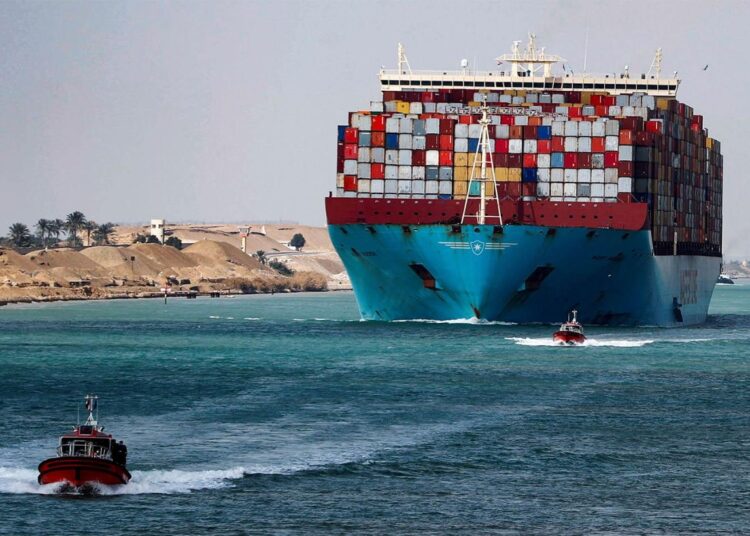Professor of Economics at Culture and Science City Ali Al-Adrisi said the Egyptian economy has achieved tremendous growth from 2.2 per cent in 2013 to 5.6 per cent in 2019.
The International Monetary Fund (IMF) adjusted its forecast for the second time in six months, saying that growth will reach 5.9 per cent this fiscal year (FY) 2021-2022 and 5.0 per cent in FY 2022-2023.
Deficit to gross domestic product (GDP) will be 7 per cent in 2021-2022, compared to 7.4 per cent last fiscal year, the IMF said.
Foreign currency reserves will reach $44.1 billion in FY 2021-2022 from $40.6 billion last year, the IMF added.
The Suez Canal is expected to earn $6.6 billion in 2021-2022, up from $5.8 billion in 2020-2021, the fund said, adding that trade balance deficit to GDP is forecast at 8.3 per cent in 2021-2022, down from 9.8 per cent last year.
The World Bank (WB) was cautiously upbeat in its growth forecast for Egypt with 6.1 per cent in FY 2021-2022, against 5.6 per cent in FY 2018-2019, due to greater demand from major trade partners, the expansion in the communication and information technology (IT) industry and gradual improvement on the tourism front.
Gas exports benefiting from rising prices on the global market is expected to push up growth, which is forecast to be the highest in the region’s biggest economies over the next two years at 4.8 per cent in FY 2022-2023 and 5 per cent in FY 2023-2024, the WB said.
MP Mohamed Badrawi of the parliamentary Planning and Budget Committee in the Chamber of Deputies said WB forecasts match those of the government, which is looking at 5.7 per cent this fiscal year.
Prime Minister Moustafa Madbouli told a recent press conference that the government aims to cut debt by 75 per cent of GDP and the trade deficit to 5 per cent of GDP by June 2026.
Egypt seeks a primary surplus of 2 per cent of GDP annually and a reduction in the cost of borrowing and servicing government debt to 2 per cent of GDP in FY 2025-2026.
Unemployment was at 7.2 per cent in the first quarter of 2022, compared to 7.4 per cent in the previous quarter, the Central Agency for Public Mobilisation and Statistics (CAPMAS) reported.






Discussion about this post